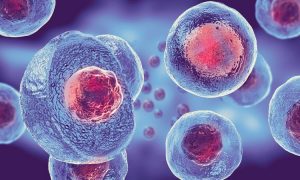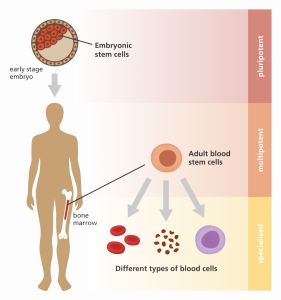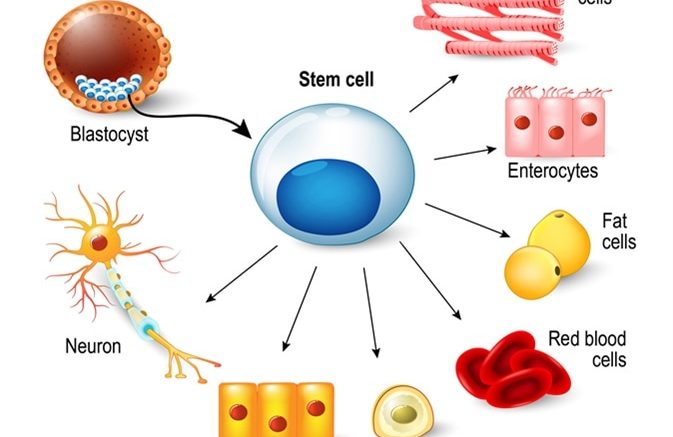Abstract
Human embryonic stem cells (hESCs) hold great promise in ushering in an era of novel cell therapies to treat a wide range of rare and common diseases, but also provide an unprecedented opportunity for basic research to deliver clinical benefit. HESCs can be used to better understand human development, model human disease, understand the contribution of specific mutations to disease pathogenesis, and develop human cell-based screening systems to identify new therapeutic agents and assess the potential toxicity of therapeutic agents under development.
Such basic research will greatly benefit from efficient methods for making targeted genetic modifications, an area of hESC research that is currently in its infancy. Furthermore, the reality of hESC-based cell therapies will require improved methods to generate the specific cells of interest, and reporter cell lines generated through targeted genetic modifications are expected to play an important role in the development of optimal differentiation-specific protocols. of cells. Here, we review the current status of homologous recombination in hESCs, a gene selection technique that is sure to continue to improve and will play an important role in obtaining maximum human benefit from hESCs. Clin Trans Sci 2011; Volume 4: 298–305
Keywords: human embryonic stem cells, gene selection, homologous recombination, RMCE, recombinase, reporter cell lines
What are Stem cells?
Stem cells recombinants are the body’s raw material, cells from which all other cells with specialized functions are generated. Under the right conditions in the body or in a laboratory, stem cells divide to form more cells called daughter cells. These daughter cells become new stem cells (self-renewal) or specialized cells (differentiation) with a more specific function, such as blood cells, brain cells, heart muscle cells, or bone cells. No other cell in the body has the natural ability to generate new cell types.

Why is there so much interest in stem cells?
Researchers and doctors hope that stem cell studies may help:
- Increase understanding of how diseases occur. By observing how stem cells mature into cells in bone, heart muscle, nerves, and other organs and tissues, researchers and clinicians can better understand how diseases and conditions develop.
- Generate healthy cells to replace diseased cells (regenerative medicine). Stem cells can be guided to become specific cells that can be used to regenerate and repair diseased or damaged tissue in people. People who could benefit from stem cell therapies include those with spinal cord injuries, type 1 diabetes, Parkinson’s disease, amyotrophic lateral sclerosis, Alzheimer’s disease, heart disease, stroke, burns, cancer, and osteoarthritis. Stem cells may have the potential to grow into new tissue for use in transplantation and regenerative medicine. Researchers continue to advance the understanding of stem cells and their applications in transplantation and regenerative medicine.
- Test new medications to determine their safety and effectiveness. Before using investigational drugs in people, researchers may use some types of stem cells to test the safety and quality of drugs. Most likely, this type of testing will first have a direct impact on drug development first for cardiac toxicity testing. New areas of study include the effectiveness of using human stem cells that have been programmed into tissue-specific cells to test new drugs. For tests of new drugs to be accurate, cells must be programmed to take on properties of the type of cells targeted by the drug. Techniques for programming cells at specific cells continue to be studied. For example, nerve cells could be generated to test a new drug for a nerve disease. The tests could show whether the new drug had any effect on the cells and whether the cells were damaged.
Where do stem cells come from?
Researchers have discovered several sources of stem cells:
- Embryonic stem cell. These stem cells come from embryos that are three to five days old. At this stage, an embryo is called a blastocyst and has about 150 cells. These are pluripotent stem cells (ploo-RIP-uh-tunt), meaning they can divide into more stem cells or become any type of cell in the body. This versatility allows embryonic stem cells to be used to regenerate or repair diseased tissues and organs.
- Adult stem cells. These stem cells are found in small numbers in most adult tissues, such as bone marrow or fat. Compared to embryonic stem cells, adult stem cells have a more limited ability to give rise to various cells in the body. Until recently, researchers thought that adult stem cells could create only similar cell types. For example, researchers thought that stem cells residing in the bone marrow might give rise to blood cells only. However, emerging evidence suggests that adult stem cells can create several cell types. For example, bone marrow stem cells can create bone or heart muscle cells. This research has led to early-stage clinical trials to test the usefulness and safety in people. For example, adult stem cells are currently being tested in people with neurological or heart disease.
- Adult cells are altered to have properties of embryonic stem cells (induced pluripotent stem cells). Scientists have successfully transformed normal adult cells into stem cells through genetic reprogramming. By altering genes in adult cells, researchers can reprogram the cells to act in a similar way to embryonic stem cells. This new technique may allow researchers to use reprogrammed cells instead of embryonic stem cells and avoid the immune system’s rejection of the new stem cells. However, scientists do not yet know if the use of altered adult cells will cause adverse effects in humans. Researchers have been able to take regular connective tissue cells and reprogram them to become functional heart cells. In studies, animals with heart failure injected with new heart cells experienced improved heart function and survival time.
- Perinatal stem cells. Researchers have discovered stem cells in amniotic fluid and umbilical cord blood. These stem cells also have the ability to transform into specialized cells. Amniotic fluid fills the sac that surrounds and protects the developing fetus in the womb. Researchers have identified stem cells in amniotic fluid samples taken from pregnant women to check for abnormalities, a procedure called amniocentesis. More study of amniotic fluid stem cells is needed to understand their potential.

Why is there controversy about the use of embryonic stem cells?
Embryonic stem cells are obtained from early-stage embryos, a group of cells that forms when a woman’s egg is fertilized with a man’s sperm in an in vitro fertilization clinic. Because human embryonic stem cells are extracted from human embryos, a number of questions and issues have been raised about the ethics of embryonic stem cell research.
The National Institutes of Health created guidelines for human stem cell research in 2009. The guidelines define embryonic stem cells and how they can be used in research, and include recommendations for embryonic stem cell donation. In addition, the guidelines state that embryonic stem cells from embryos created by in vitro fertilization can only be used when the embryo is no longer needed.
Where do these embryos come from?
The embryos used in embryonic stem cell research come from eggs that were fertilized in vitro fertilization clinics but never implanted in a woman’s uterus. Stem cells are donated with the informed consent of the donors. Stem cells can live and grow in special solutions in test tubes or Petri dishes in laboratories.
Why can’t researchers use adult stem cells instead?
Although research on adult stem cells is promising, adult stem cells may not be as versatile and long-lasting as embryonic stem cells. Adult stem cells may not be engineered to produce all cell types, limiting how adult stem cells can be used to treat disease. Adult stem cells are also more likely to contain abnormalities due to environmental hazards, such as toxins, or errors acquired by the cells during replication. However, researchers have found that adult stem cells are more adaptable than first thought.
What are stem cell lines and why do researchers want to use them?
A stem cell line is a group of cells that are descended from a single original stem cell and grown in a laboratory. The cells of a stem cell line continue to grow but do not differentiate into specialized cells. Ideally, they remain free of genetic defects and go on to create more stem cells. Groups of cells from a stem cell line can be taken and frozen for storage or sharing with other researchers.
What is stem cell therapy (regenerative medicine) and how does it work?
Stem cell therapy, also known as regenerative medicine, promotes the repair response of diseased, dysfunctional or injured tissue using stem cells or their derivatives. It is the next chapter in organ transplantation and uses cells instead of donor organs, which are in limited supply.
Researchers grow stem cells in a laboratory. These stem cells are manipulated to specialize into specific types of cells, such as heart muscle cells, blood cells, or nerve cells. The specialized cells can then be implanted into a person. For example, if a person has heart disease, the cells might be injected into the heart muscle. The transplanted healthy heart muscle cells could help repair failing heart muscle. Researchers have already shown that adult bone marrow cells guided to become heart-like cells can repair heart tissue in people, and more research is underway.
Have stem cells already been used to treat diseases?
Yes. Doctors have performed stem cell transplants, also known as bone marrow transplants. In stem cell transplants, stem cells replace cells damaged by chemotherapy or disease or serve as a way for the donor’s immune system to fight some types of cancer and blood-related diseases, such as leukaemia, lymphoma, neuroblastoma and multiple myeloma. These transplants use adult stem cells or blood from the umbilical cord. Researchers are testing adult stem cells to treat other conditions, including various degenerative diseases such as heart failure.

